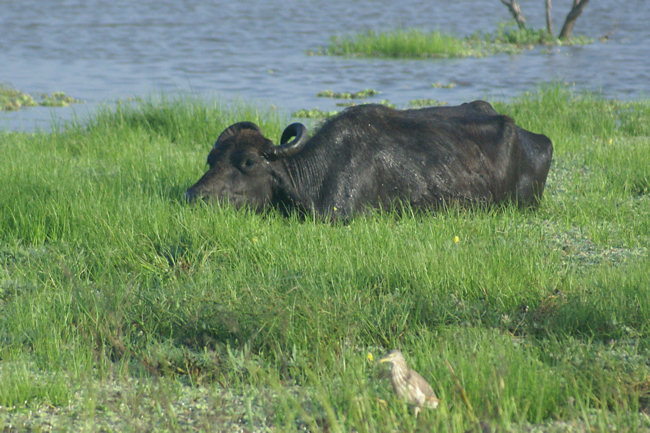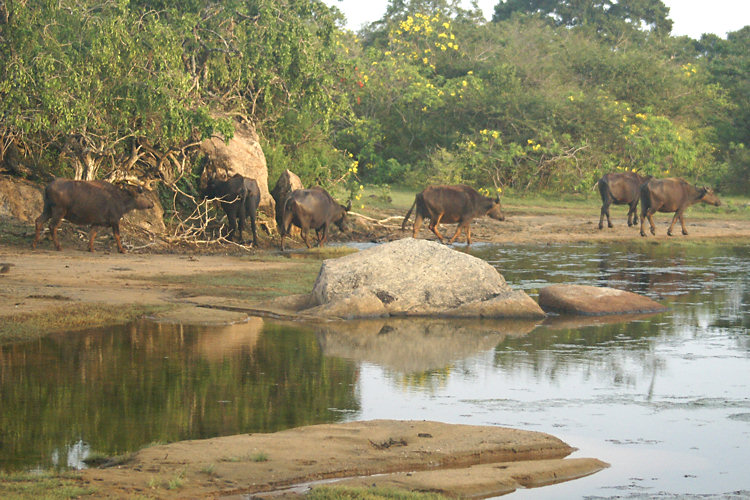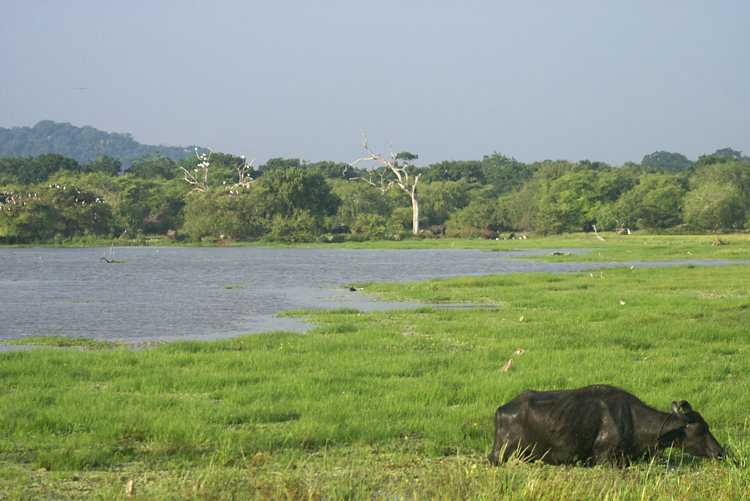Water Buffalo of Yala National Park
What is noticeable about the landscape of Yala National park are the vast areas of flooded grass land that expands or diminishes with the arrival of the Monsoons. The Sri Lankan Water Buffalo relish in this wet environment. The water is cooling in the tropical heat.

Yala National Park Sri Lankan Wild Water Buffalo
It provides relief from the hundreds of biting blood sucking insects. These lagoons also provide their major food source. Lush grass and leaves. They are safe in the water from Leopards but they have to keep an eye out for very large Crocodiles.
You will also encounter family groups of Sri Lankan Water Buffalo at small water holes. They may seen just like big cows but do not get too close. Some are 6 feet tall at their shoulders. Adult Water Buffalos can fight off Leopards with their bulk and horns. A little unarmed human is nothing. If you fall you will be trampled and attacked with its horns.

Yala National Park Sri Lankan Wild Water Buffalo herd off to find some grass to eat
The water buffalo in Yala National Park are wild. May buffalo in India and Sri Lanka have been domesticated. They are used to carry loads, pull wagons and ploughs, provide meat and milk. Their dung is used as a fertilizer and dried buffalo poo is burnt as a fuel.
They are superior to common cattle for working in paddy Rice fields as they are adapted for living in watery swamp conditions. They have wide splayed large hooves that helps them navigate through Sri Lankan marshes and muddy fields.

Yala National Park Sri Lankan Wild Water Buffalo in flooded grass land
Look out for birds riding on their backs. They are not getting a free ride. A number of different types of small birds look at the back of a Water Buffalo as a mobile restaurant. They remove parasitic insects that are trying to bite the Buffalo. They both co-exist very well. You will always see white Egrets and Herons lurking near the feet of Water Buffalos, ready to munch on anything living that these large creatures disturbed on their travels.
Studies have revealed that normally on 50% of the female Wild Water Buffalos give birth to calves. It is quite common to see the mother leave her calf with a female without a baby whilst she goes grazing. If the mother is killed the females in the herd adopt the orphaned calf.
Baby water Buffalo are normally born at the end of the Monsoon season when there is a lot of lush grass around for mum to eat and produce rich milk for the calf, so they can put on body weight quickly. This helps maximise the young buffalo's chance of survival. The bulls do not stay with the family groups during the dry season. If you see a wild water buffalo on its own it is probably an adult male. They are unpredictable so keep your distance.
Travel books

